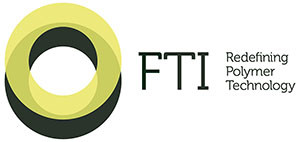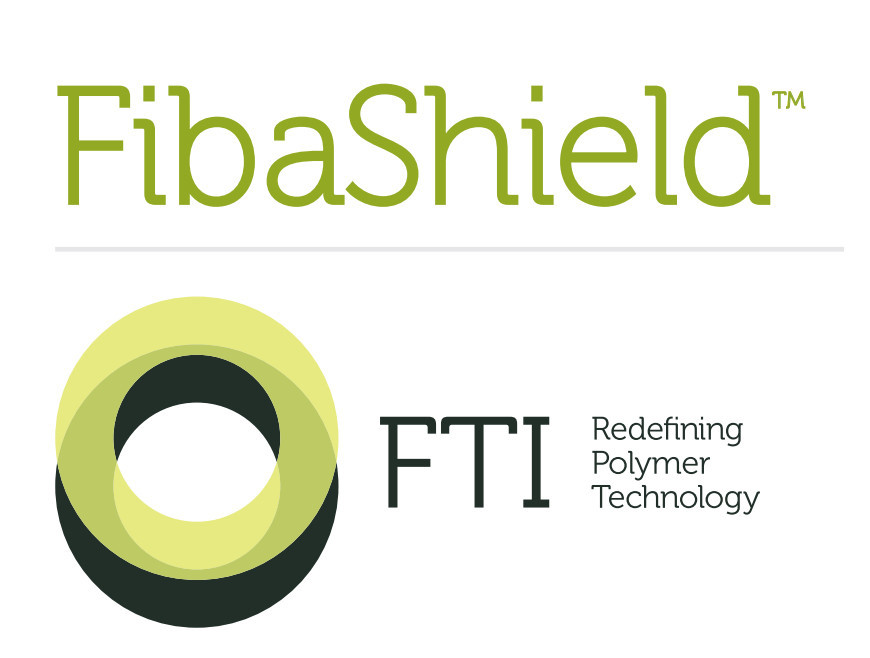THE PROS OF PRE-INSULATION
Pre-insulation of LNG rundown lines has been widely practised since the 1980s because of the benefits to construction in terms of health and safety, schedule, cost, and quality. In operation, the reduced incidence of joints in insulation and cladding means that these pre-insulation systems rarely need maintenance and thermal efficiency is excellent.
The following analysis is particularly targeted at LNG plants, although the same lessons can be applied to all processing plants where controlling thermal efficiency is important for the economics of the process.
Benefits in construction
Pipe pre-insulation is the process of installing insulation and cladding to the pipe before the pipe is erected. The process is carried out in a workshop rather than on site. The pre-insulated pipe is then delivered to site and, after installation, welding, and pressure testing, the weld joints are insulated. This process is most relevant to the jetty and pipe rack areas.
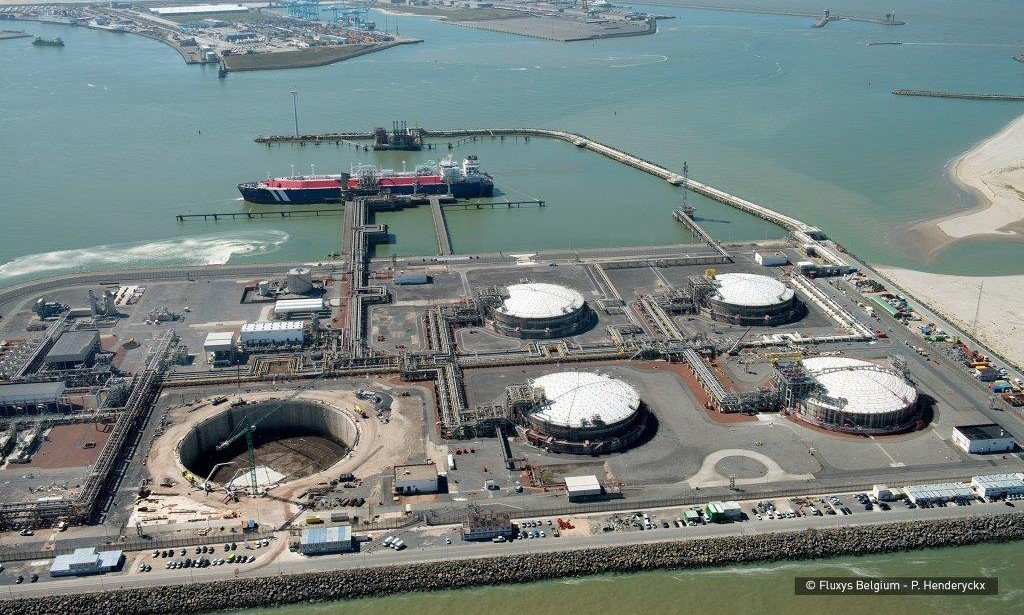
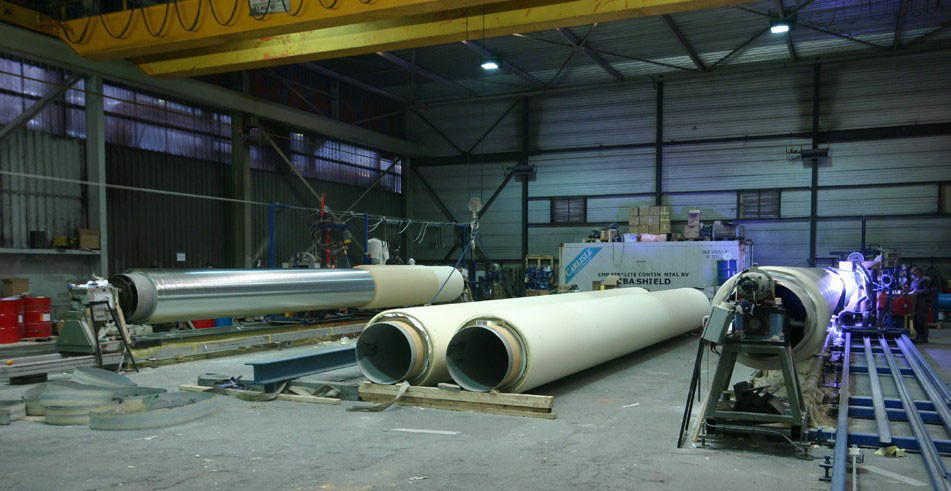
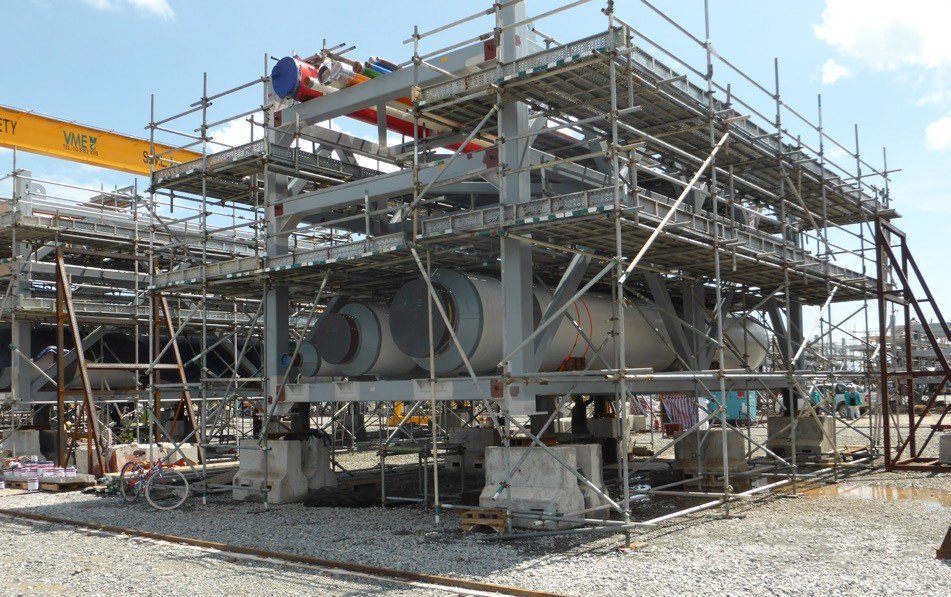
There are several different pre-insulation systems on the market with some, like FTI’s FibaShield, being sufficiently mobile to be transportable by container to the construction site or module yard, wherever is most convenient for a particular project.
FibaShield is made up of insulation layers of polyisocyanurate ‘PIR’ foams, polyester/aluminium/polyester ‘PAP’ foil vapour barriers and fibre-reinforced polymer ‘FRP’ jacketing built up in seamless layers. Pre-insulation removes around 75% of the labour hours from site as most of the insulation activity is carried out in a workshop. Only the insulation over the field welds and fittings is carried out on site. One of the key benefits is to health and safety, as much of the insulation activity can be moved from working at height or over water to safe, well controlled ‘factory’ conditions.
Reduced mechanical completion delays
The other great benefit of pre-insulation to construction management is improved scheduling. Traditionally, most of the insulation activity is carried out at the end of the project after pressure testing and retouching of damaged coatings and is on the critical path to completion and handover. This is particularly important when building in module yards, where the schedule is determined by the fixed barge-departure date. But, by pre-insulating piping, this element of work can be carried out at the same time as other construction activities and eliminated from the critical path.
Furthermore, the level of quality, its assurance and control are enhanced by pre-insulating in a workshop. This comes from working in a covered, controlled environment, sheltered from the weather, with the ability to very easily inspect a high percentage of work as it proceeds through the production process. It is also a consequence of the pre-insulation process not being under undue time pressure, which often compromises quality in traditional systems.
A feature of many of the LNG projects built in modules on shipyards, remote from the construction site, has been the fact that either the insulation application was incomplete when the barge left the yard, or that major repairs to the insulation were required on site; therefore, delaying start up. In both cases the insulation activity, traditionally 100% on the critical path, would have been under immense time pressure with a resulting reduction in quality control.
Additionally, mechanical completion delays often affect the schedule planned for traditional insulation activity. The consequence is that the insulation contractor has less time to carry out these works and must find further manpower to complete the job. This usually results in compromised quality, incomplete insulation, and cost overruns which impact on the EPC contractor. Pre-insulation minimises these issues and substantially reduces the risks of cost escalation. The pre-insulated proportion of any work can be guaranteed not to escalate in cost.
Eliminating HDPUR from the cryogenic supports
Another issue affecting construction cost in conventionally-insulated systems is the need for high density polyurethane ‘HDPUR’ block at the cryogenic supports. These are largely eliminated with the FibaShield system.
The FibaShield pre-insulation system is made up of high strength polyisocyanurate ‘PIR’ foam and fibre-reinforced polymer ‘FRP’. While passing the CINI requirements for PIR foams and UV curing GRP, FTI has also designed and qualified the system to take the high compressive loads found at guide and resting supports.
FTI has developed load tables, with 5x safety factor, which show that in all but a small minority of cases the system can support the loads of the complete range of pipe sizes – up to 44 in. and beyond. The resulting elimination of HDPUR from the cryogenic supports positively affects construction costs, thermal efficiency and maintenance.
When assessing the potential construction savings that would result from this, we took the real example of a traditionally-insulated LNG import terminal which needed 7000 m³ (net after cutting from 10 000 m³ block) of PIR insulation, and cost US$6.6 million for the complete insulation contract. The cost of HDPUR including resting, guide and anchor supports totalled a further US$2.7 million. If the FibaShield system had been used, the project would have been able to exclude a large part of the HDPUR and would have saved US$1.7 million – 60% of the total support costs. The US$1.7 million saving would have represented over 20% of the combined support and insulation cost for the terminal (US$6.6 million plus US$2.7 million). Furthermore, HDPUR supports are a long lead item and delays in delivery can cause delays to project progress. Employing pre-insulated pipes reduces this factor to anchor supports only. And at installation, large stainless-steel pipes, which are notoriously out of round, can be difficult to fit into a moulded HDPUR support without site work. In contrast the FibaShield pre-insulated pipe is made to tight tolerances, meaning that fit into the support has never been a problem.
Pre-insulation operating benefits
The thermal efficiency of HDPUR is typically 0.04 for 160 kg to 0.05 W/(m.K) for 320 kg/m³ density, or twice the thermal conductivity of the PIR in the FibaShield system. Taking into account the number of supports, these ‘hotspots’ can cover 5% of 24 – 44 in. pipe and up to 10% of smaller pipes, with a corresponding reduction in the thermal efficiency of the plant.
Additionally, piping installed with HDPUR supports is prone to maintenance issues as the coefficient of thermal expansion of stainless steel pipes of 16.10-6 m/(m.K) is markedly different from that of the 40 – 60 kg PIR foam used on the rest of the piping at 70.10-6 m/(m.K). The supports are clamped down onto the pipe and need to be treated as fixed points. As described in CINI, contraction joints need to be installed between every fixed point to accommodate the differential movement between the pipe and its support and the main PIR insulation.
If the contraction joint is not installed correctly, a gap is found to open up at the support location as shown in Figure 5. This problem is a common source of ongoing maintenance and heat gain on LNG plants. The design followed by the FibaShield pre-insulation system bears similarities to the shear-key/slide-through system described in the CINI manual but its mechanical strength allows exclusion of HDPUR at supports and therefore eliminates many joints and their associated contraction joints. In fact, the pre-insulation system has only one joint per 12 m pipe whereas a traditional hand applied insulation installation will have joints every metre between pipe sections, at every support and its associated contraction joint. Reducing joints improves thermal conductivity, reduces the costs of installation and eliminates maintenance.
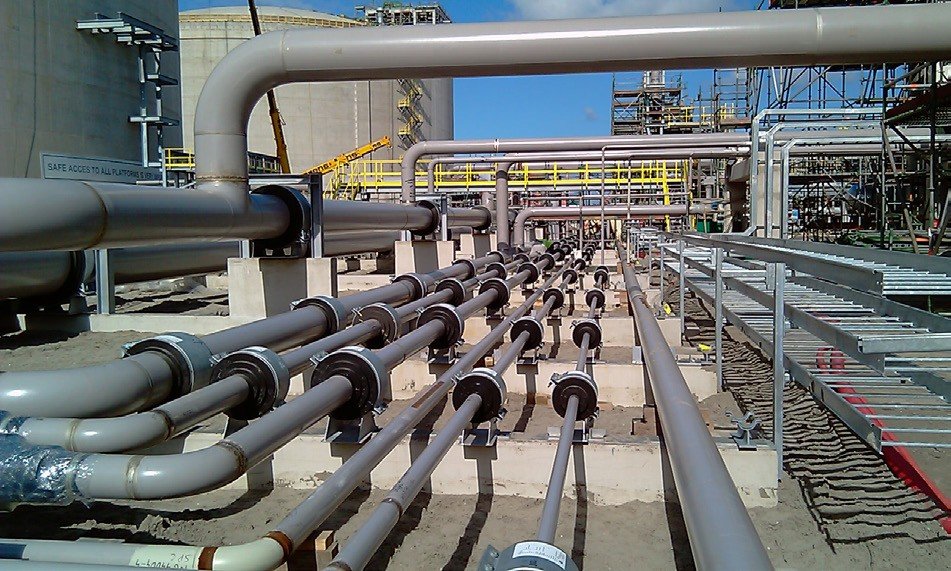

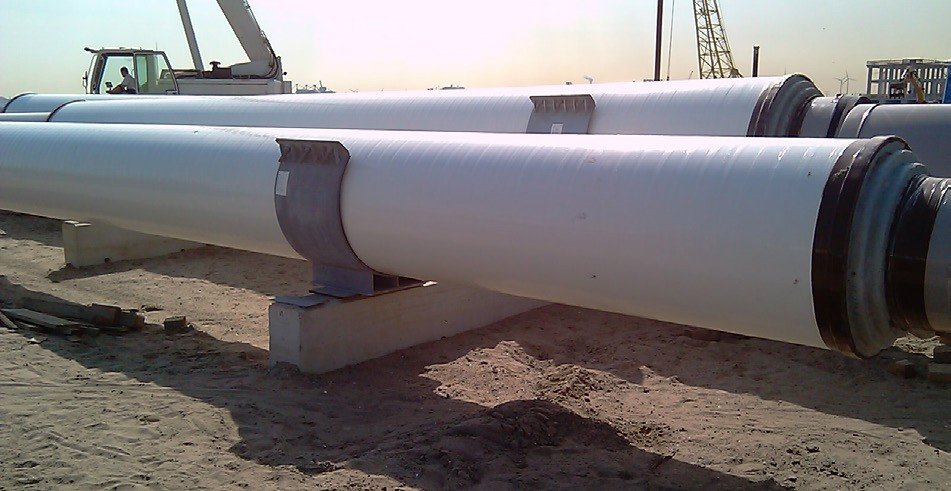
In terms of thermal efficiency, data has been made available from the Zeebrugge LNG Import Terminal, operated since 1987 by Fluxys Belgium, showing thermal efficiency improvements in favour of pre-insulation.
Fluxys not only operate the LNG Import Terminal at Zeebrugge but also run the Belgium gas transmission network. In the recent past, Fluxys has developed its large LNG storage capacity to service the wider European network and provide services for LNG trans-shipment and LNG powered ships and trucks.
LNG is transported and stored at -160ºC and at nearly atmospheric pressure. Fluxys imports and exports several LNG cargoes every year. When the jetty isn’t being used it is exposed to purely ambient temperatures. Operators maintain these intermittently-used lines at around -160ºC to avoid undue stress to the loading lines and the insulation system. The LNG unloading and recirculation lines are kept cold by circulating a relatively small flow of LNG from the tanks on site. Using LNG in this way consumes energy and therefore adds to operating cost. To minimise these costs the piping is insulated.
There are different ways of insulating cryogenic lines. Either continuous – in the case of machine applied pre-insulation – or discontinuous in the case of hand applied. Insulation engineers had long held the view that pre-insulation was always likely to be more efficient.
On 1 January 2017 Fluxys brought into service a new jetty which was insulated using the FibaShield system. This gave the opportunity to compare Zeebrugge’s data for the old and new jetties, making it possible to assess the improved efficiency of the FibaShield pre-insulation system.
The old jetty is approximately 700 m long with two 24 in. pipes for the LNG unloading and recirculation lines, insulated with 130 mm of PIR insulation and 50 mm of cellular glass insulation – applied by hand.
The new jetty is somewhat longer, being 1300 m of 40 in. LNG unloading line and a 10 in. recirculation line. The 40 in. line was insulated with 200 mm of PIR insulation and the 10 in. with 140 mm. In this case the insulation and cladding was applied by machine using the FibaShield system.
During FEED for the new tanks and jetty, Fluxys calculated that the LNG recirculation rate, based on their experience of the original jetty, would need to increase to approximately 300% due to the increased size and length of the new unloading line. In the event the actual recirculation rate required is only 200%. This reduction in recirculation rate directly reduces the running costs of the LNG plant.
Conclusion
In conclusion, there are multiple benefits during construction from employing pre-insulation, including improved health and safety, schedule and Capex, while operators will see Opex reduced by improved thermal efficiency and reduced maintenance.
For more information about FTI’s pre-insulated pipe system – Fibashield contact us:
T: +44 (0) 1749 881 920
E: support@fti-group.co.uk
W: fti-group.co.uk
